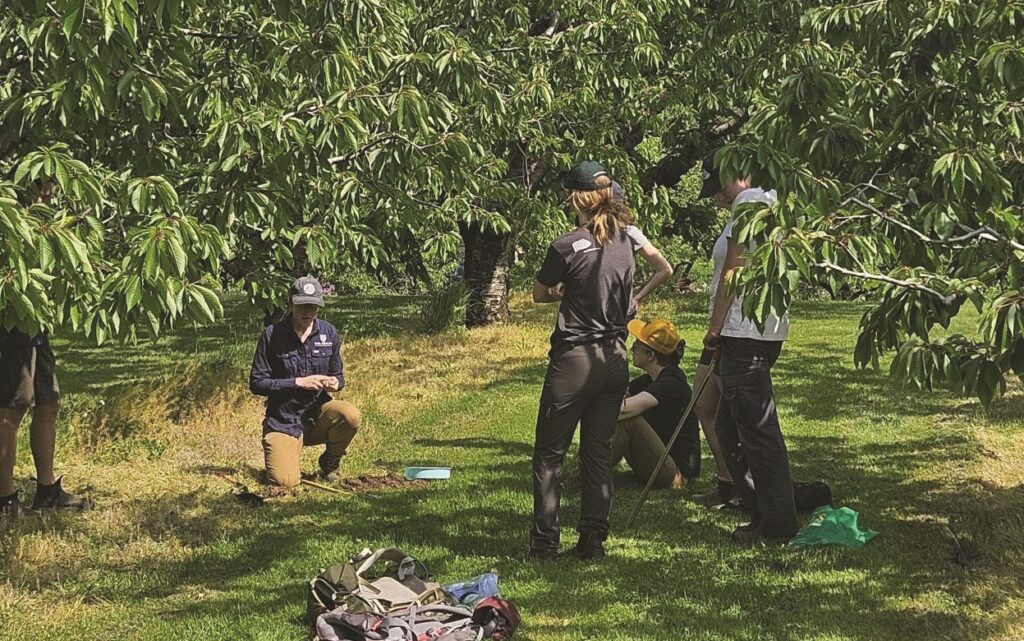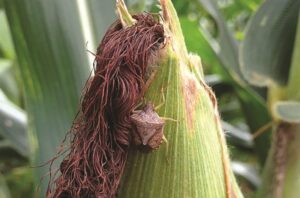Soil health management systems
CROSS-BORDER PROJECT COULD LEAD TO FARM SAVINGS

ADOPTING A ‘SOIL HEALTH MANAGEMENT SYSTEM’ MAY SOUND DAUNTING, but many of you reading this are already implementing some of the practices — and a new study encompassing Canadian and U.S. farmers shows the economic benefits are clear.
This study was conducted by the Soil Health Institute (SHI), a North American non- profit institute based in North Carolina, in collaboration with General Mills. SHI analyzed 10 wheat farms in Kansas and North Dakota and five grain farms in Ontario, Manitoba, and Saskatchewan. The average farm size was 1,600 acres in the U.S. and 3,851 in Canada.
In the opinion of SHI soil scientist Dr. Jenny Bower, these studies are essential for providing a business case for the adoption of best soil management practices. “The Greenbelt Foundation, an organization with which we collaborate, found in their report ‘The Power of Soil’ that the number one consideration behind Ontario farmers’ decision to adopt soil health practices was their perceived benefits, costs, and risks,” says Bower. “Studies like this are essential to inform farmers’ perceptions of the economic outcomes of adopting soil health practices.”
OUTCOMES
For the Canadian farmers in the study growing small grains, using a soil health management system (SHMS) cut costs by an average of $37/ acre. Based on standardized prices, using a SHMS increased net farm income for these farmers by an average of $42/acre for small grains and by an average of $40/acre for corn, $10/acre for soybean, $74/acre for canola, and $79/acre for sugar beet. One farmer realized additional revenue of $46/ acre for grazing cover crops.
TILLAGE AND COVER CROPS
As the name suggests, a SHMS prioritizes the health of soils, mainly by reducing soil disturbance and keeping living roots in the ground. Conservation tillage is key. On average, the study farmers have been practicing no-till for over 15 years and cover cropping for over 11 years.
Of the Canadian farms participating in the study, 96 per cent of the studied farmland was no-till, with the rest reduced till, and cover crops are planted on 61 per cent of all acreage. Note for comparison’s sake that the rate of no-till adoption for all of Canada is currently 61 per cent, with a rate of 30 per cent in Ontario, 29 per cent in Manitoba and 78 per cent in Saskatchewan. Among farms across Canada that have cover crops in use, 23 per cent of cropland is planted in cover crops (26 per cent in Ontario, six per cent in Manitoba, and 14 per cent in Saskatchewan).
Two of the Canadian study farmers planted cover crops before small grains production, one with a barley, pea and fava bean mix before spring wheat and spring oats and the other with winter/cereal rye and clover before spring oats. Cover crop seed expenses averaged $11.93/acre for these farms.
In this study, the researchers found that planting cover crops and reducing tillage may enhance weed suppression, leading to some cost savings through changing or eliminating some herbicide applications. In other circumstances, additional herbicide is used for weed management or cover crop termination.
Savings in fertilizer and amendment costs due to using a SHMS were reported by three of the Canadian farmers, amounting to $28.66/acre when averaged across all five farms.
CROP PRODUCTION AND FARM BENEFITS
Staying with the Canadian farmers, increased crop resilience to extreme weather — an indirect economic benefit of using a SHMS — was reported by all. “Improved crop resilience is due to improved soil organic matter and soil structure,” explains Dr. Archie Flanders, SHI agricultural economist. “The most-often mentioned reason for improved crop resilience is that crops better withstand drought conditions due to improved water infiltration into root zones.”
Four of the five farmers also reported more timely access to their fields, which again relates to boosts in water infiltration. At planting, farmers don’t have to wait as long for fields to dry out, notes Flanders, and in the fall, harvest is not as subject to the normal delay times from rainfall if it occurs.
Four of the five farmers also reported improved water quality, which Flanders says is due to reduced erosion. “Famers are observing less runoff into adjoining waterways,” he says, “and when runoff does occur, it is clear rather than tinted with silt.”
Decreased erosion and improved water infiltration are also believed to be the reasons why one farm had increased spring wheat yield (five bushels/acre) from adopting a SHMS. This farmer also reported a more uniform yield across the entire farm. “Improved production was especially realized over areas with knolls,” says Flanders.
However, one farmer reported a decreased yield of five bushels/acre for spring oats but also reported improved water infiltration and increased soil organic matter. In this case, the farmer had planted cover crops that were grazed for increased revenue and cover crops were allowed to winter kill rather than termination with herbicide. Flanders attributes the decreased yield to be likely due to delayed planting and shortened growing season caused by planting the cover crops. However, he notes that with reduced production expenses and revenue from grazing cover crops, this farm had the highest net farm income.
SHMS AND EQUIPMENT COSTS
This study also found that equipment ownership expenses are reduced if a farmer uses a SHMS. Equipment ownership is a per-acre expense that corresponds to usage of equipment during field work.
The savings for farmers that adopt a SHMS are realized through getting rid of tillage equipment and not needing more expensive, higher-horsepower tractors required for tilling.
CONFIRMED RESULTS
SHI scientists are finishing the analysis of their national-scale economic assessments, which are being conducted with partners on over 150 farms in Canada and the U.S. These results confirm the smaller study, showing clear economic benefits linked to the adoption of SHMS, primarily through reduced production costs and increases in net farm income.
“These results have also demonstrated how these systems can effectively mitigate operational risks across diverse climates and production systems,” says SHI chief of staff Dr. Emily Bruner. “Going forward, we’re focused on equipping farmers, researchers, conservationists and policymakers with practical insights to support the adoption of SHMS by expanding our research to cover a broader diversity of crops and soil types, as well as investigating the short-term economics of adoption. Our goal is to strengthen support for adopting these systems by providing regional, place-based information to inform decisions and policies as farmers transition to new management approaches.”
Read the full report at www.soilhealthinstitute.org.
The SHI also has a current project with the Greenbelt Foundation benchmarking soil health in the Golden Horseshoe area of Ontario on 300-500 grain and oilseed farms. The project provides farmers with analysis and interpretation of soil health indicators. For more information: www.greenbelt.ca/greenbelt_soil_health. •


























